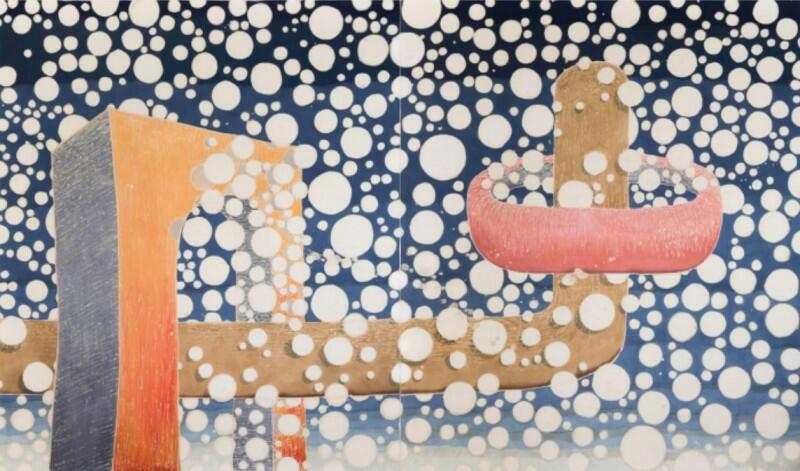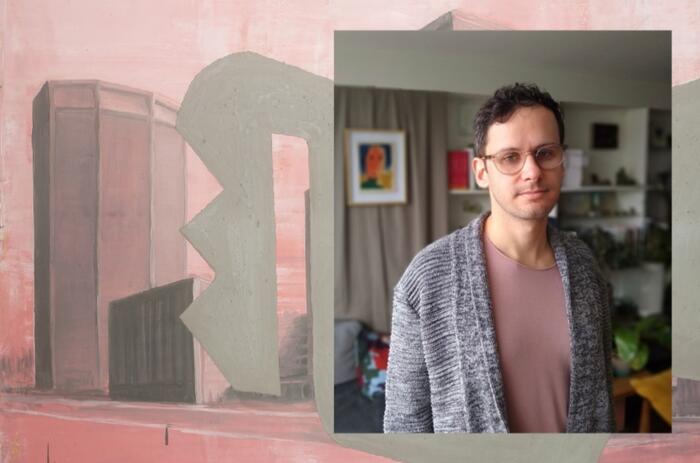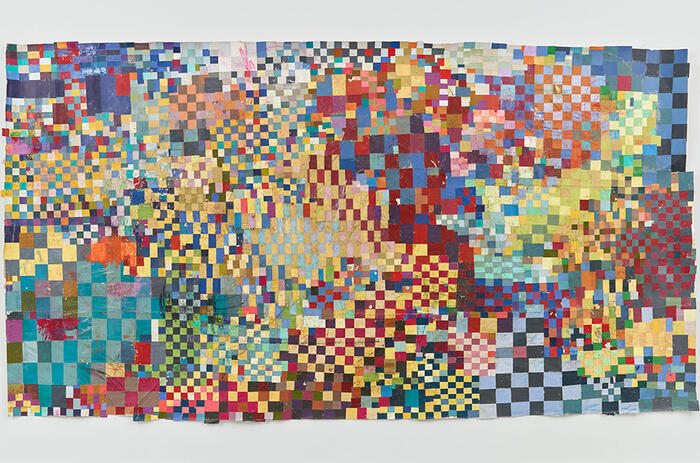“PARA EMPEZAR” – GROUP EXHIBITION AT 80M2 LIVIA BENAVIDES GALLERY
The Lima-based gallery presents Works by Armando Andrade Tudela, Iosu Aramburu, Fernando Bryce, William Cordova, Zhivago Duncan, Ximena Garrido-Lecca, Rita Ponce de León, Gilda Mantilla and Raimond Chaves.

Armando Andrade Tudela associates much of his work to the notion of hauntology, a concept derived from the book Specters de Marx by Jacques Derrida (1993) and developed by writer and cultural critic Mark Fisher. Fisher argues that certain ideas or forms from the past continue to hunt the present albeit having disappeared from the cultural landscape. In his work the artist questions notions of origin and dissolution and their direct relation with personal and/or collective trauma, be it through the intersection of different modernist projects or cultural dislocations between Western and South American legacies.
Más Bien #1-5 are a series of bi-dimensional works where the idea is to structure an ‘image’ through the administration of its material qualities.The process is in fact, closer to that of flm editing: color felds are used like raw footage, cut, arranged and edited together in non-narrative sequence. In this regard, these works don’t have anything to tell except their material presence, which is in itself a representation of the way they are assembled.That is how they ‘present themselves’, as material organized and arranged.Therefore, the importance of the bleaches in some of the color felds and the curves and deviations produced through the stretching of the canvas. This is where the contradiction and tension of the work lies.
Gilda Mantilla (Los Angeles, 1967) and Raimond Chaves (Bogotá, 1963) have been working together since 2001. Mantilla and Chaves, who currently reside in Lima, understand their work as a dialectical confrontation with the contexts in which they are registered. Thus, they have focused on the representation and identifcation processes that allow the construction of a specifc territory through images.
The piece is built with 364 rectangular pieces of recycled gray cardboard assembled in MDF sheets following the structure of a calendar that corresponds to the twelve months of April 2009 to March 2010, in that order. The colors of each piece / day have different shades of gray in addition to black and red that represent the temperature in Lima, the meteorological and the socio-political at the same time.
In her practice, Ximena Garrido-Lecca examines the troubled history of Peru and explores the cultural impact that has resulted from colonial standards in the wake of globalization processes. The artist observes urban, rural or natural architecture and analyzes the spaces where a negotiating materiality between the specifc and the universal is visible. The artista takes as a starting point ways of doing, organizing and communicating the present in the current Peruvian culture and executes strategies of appropriation, modifcation and assembly to interrelate our relationship with the transformation in the specifcity of the landscape. It is for this reason that often the sculptures, drawings and installations of the artist have a direct reference to popular forms of Peru and through an amplifying gesture indicate and recover their meanings in the construction of our relationship with the world. The work of Garrido- Lecca refects on the open dynamics that form the identity and the coexistence of múltiple stories that need to be revised to generate economic and socio-political balances without harming the most fragile communities that resist cultural hegemony. “In Umbrales, I used recycled silicon wafers to create geometric compositions, using a similar technique to stained glass windows. Silicon is an element that is found mostly in sand and dust, being the second most abundant element on the planet after oxygen.”. The patterns used in the stained glass windows have been downloaded from vector graphic database systems such as Shutterstock. They are synthesized versions of pre-Columbian Peruvian designs that have been transformed into vectors: computer graphics images that use mathematical equations to calculate the relationship between the edges of shapes in a specifc design.
Comprised of a series of paintings and sculptures, When Our Pineal Glands were Big is a body of work that consolidates a narrative that Zhivago Duncan has been creating through visual and textual works over the past 3 years. The ongoing project proposes a synthetic theory of the transfer of technology from metaphysical to physical through the shrinkage of the pineal gland over the evolution of mankind. In ancient times, human beings had much larger pineal glands as wild animals continue to exhibit. Due to the signifcantly larger size of our brains in proportion to our body we were able to not only to tap into natural tides and “Universal connection and communication” but also deeper telepathic understanding of each other. Through the various toils of human evolutions and the change in diet and living conditions, Mankind, lost signifcant connection to the earth through the shrinkage of the gland over the eons.
These painting are studies of eternal notions of value, psychological, mathematical, physical and metaphysical ideas of the creation of the world. One may say they are microscopic views of much larger elements or they are just architecture holding psychological values.The representation of connectivity gives birth to a line of mythological human structure crossing over to stories of gods and nature of a once harmonious world.
Rita Ponce de León was born in Lima Perú, 1982 and lives in Mexico City since 2003. The Works she presents are, in her words, “the life that I share with others”. The pictures come from conversations, interactions, exchanges she had with others. And the titles of the artworks are quotes from those conversations.
William Cordova’s sculptures, installations and works on paper are very much bound up with his transcultural biography that took him from Lima, Peru, where he was born (1971), via Miami, Florida, to the many other places where he has lived or spent time in the US and Europe. His subjets are drawn from a continuum of radical movements and players in struggles for self-determination. “Revealing the intersections between magical realism and social realism, he orchestrates collisions between ancient and recent histories, oral tradition and revolutionary texts to make way for an in- between, transitional, and ultimately transformative space.” (Rashida Bumbray).
Fernando Bryce (born in 1965 in Lima) attended university in both Lima and Paris and lived for many years in Berlin. His drawings systematically re-examine the ways in which historical events are represented in print media. The process, which Bryce describes as “mimetic analysis” involves selecting archives for print materials such as advertisements, newspaper articles, and propaganda brochures to faithfully reproduce a selection of these materials, creating his own “reconstructions.”
The work of Iosu Aramburu (born in Lima in 1986) revolves around modernity as an aesthetic, architectural and philosophical paradigm. From the reinterpretations of modern languages, Aramburu seeks to question the failures of the modern project. He explores abstraction and modernist architecture, using its elements as a starting point. From the materiality of his work, the artist reduces the totalitarian impetus of modern art and recovers aesthetic patterns so that he has a critical angle to the paradigm of modernity.
80m2 Livia Benavides
Malecón Pazos 252, Barranco
Lima, Peru






